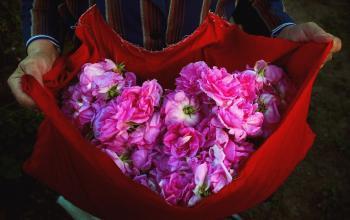As with any foods you eat, when selecting snack items, there are two important things to always consider: origin of the product and how it was produced.
The origin relates to how far the item had to travel to get to you. The farther the distance, the more resources were consumed in getting it to you. Buying items that were locally or domestically produced—or making or growing them yourself—would be a better choice than imported goods.
How an item is produced is an indication of the number of resources that were used in manufacturing the item or preparing it for your consumption. Raw items or goods bought in their natural state require fewer energy resources than processed goods.
Items with the least amount of packaging or items packaged with recycled material printed with plant-based ink can reduce the amount of waste generated by their consumption, whereas items packaged in Styrofoam or unrecyclable materials can unnecessarily contribute to the already large amount of materials in our landfills.
Green Choices
Items that fall under the category of green snacks would be produce items like raw fruits, vegetables, nuts, and seeds. Depending on the variety, it is usually easy to find produce at your local market that hasn’t had to travel too far or has been overly processed. Sun-dried items like raisins, prunes, apricots, or any other fruits and vegetables offer snack alternatives that require minimal processing or energy resources in their production.
Still, there are other possible snack items that can help the rainforests, where many acres are cleared for farmland. If a profit can be made by the selling of native products from that region, the locals will be less likely to try to earn money through farming.
Some of these products that encourage the conservation of rainforests are items that can also make good snacks. These include cashews and figs.
More often than not, when we talk about doing things that are healthier for ourselves and/or the planet, it involves sacrificing comfort, convenience, and taste—and is often expensive. Here’s some good news: Another item that naturally grows in tropical rainforest conditions are cocoa beans. So that means chocolate can remain a snack item.
Unfortunately, eating rainforest items is a Catch-22. These snacks can help prevent deforestation, but unless you live near a rainforest, they have to be imported, and this requires the consumption of energy resources in their transportation. This could be the one case where you could justify not buying locally or domestically and still acting for the benefit of the planet at the same time.
Finally, the all-time, number one green snack item in America is none other than popcorn. Popcorn requires minimal processing, minimal packaging, and it can be bought locally all over North America. Even in places where it needs to be shipped, it’s never that far.



